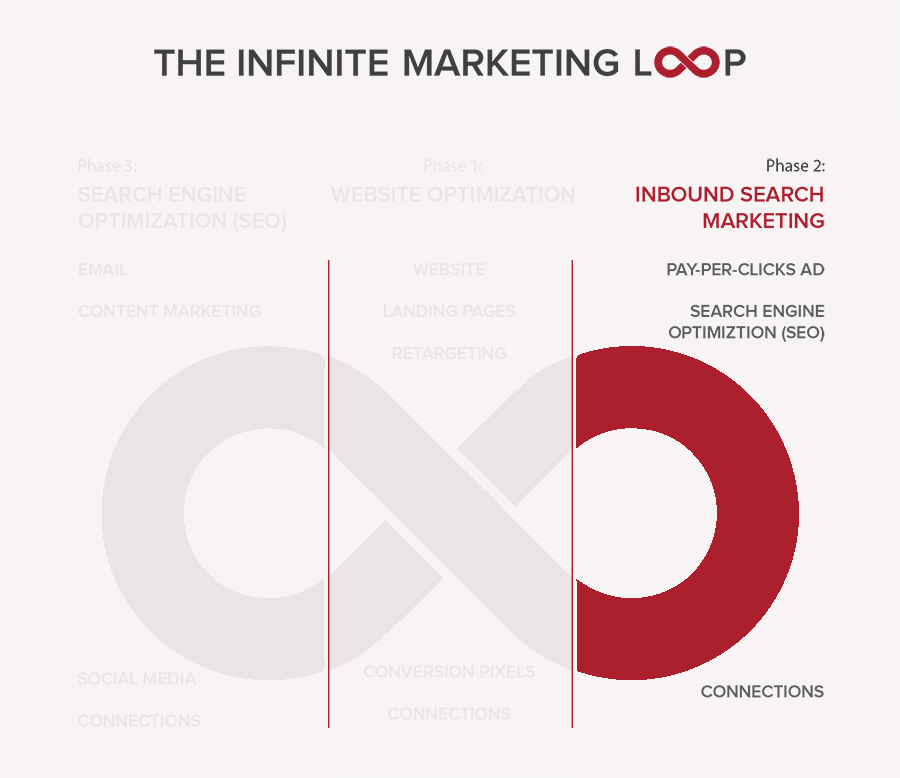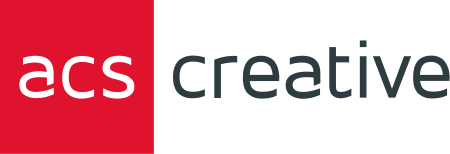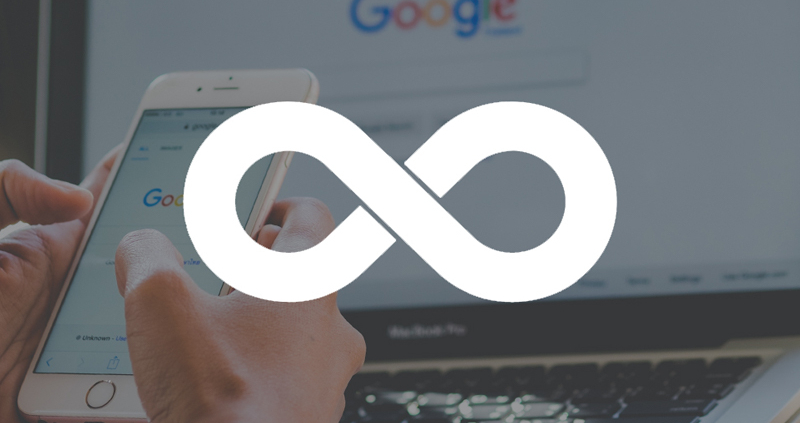Infinite Marketing Loop: Inbound Search Marketing
We recently opened our vault to let the world in on our Infinite Marketing Loop strategy and how it applies to virtually every business in any industry. A few weeks back, we touched on Website Optimization—the critical first phase of this proven process. All caught up? Let’s continue with Inbound Search Marketing!
Inbound Marketing Fundamentals
Fact is, consumers (and business owners) are making their buying decisions online. Whether it be finding a restaurant for date night or choosing a local landscaper, instant access to a plethora of business information has turned the average American into a master research expert. Search engines like Google, Bing, and Yahoo! have not only become invaluable tools for people, but have leveled the playing field for businesses as well. Through a well-managed Inbound Search Marketing (SEM) plan, utilizing both paid (PPC) and organic (SEO) strategies, any business can compete for those precious, targeted clicks!

Pay-Per-Click Ads
Depending on the search engine, paid ads appear either above, beside, or beneath the organic results for a given search term. Buying PPC listings increases your chances of being seen (and clicked) before your competitors—for a price, of course. Advertising platforms such as AdWords and Bing Ads operate on an auction-style format, where ads compete with each other instantly, in real-time, based on the amount each business is willing to pay per click or impression and their overall campaign budget. The more popular a particular keyword (search term), the more expensive it tends to be. For example, “Pomeranian dog portraits” will likely cost you less per click than “auto insurance.” Although, to me, a professional pom painting is priceless.
Sure, anyone can bid $500 per click to beat Geico in search results for one day, but it’s by no means a sustainable strategy. Doing your homework to discover and employ more specific (long-tail) keywords with less competition can increase your conversion rate without breaking the bank. A PPC campaign is not a set it and forget it task—but instead and ongoing effort that needs to intelligently adapt as you learn.
One critical point to keep in mind is Google’s commitment to delivering relevant results to its users—and that includes paid ads. Through an incredibly complex algorithm, search platforms can determine if your ad is meeting the needs of those who see it, and penalize your placement if it falls short.
Search Engine Optimization
If you follow our blog regularly, you might pick up on a recurring theme here. When it comes to internet marketing, nothing is more important than SEO. It delivers all the benefits of paid advertising—but for free. Regardless of what the astounding number of emails in your spam folder claim, Search Engine Optimization is not an exact science and there are no guarantees. In fact, employing shady (“Black Hat”) tactics to better your site’s ranking can actually get your URL demoted (“sandboxed”) by the various search platforms. For this reason, among others, it’s best to keep things above board when it comes to your organic performance.
Each search engine operates on a proprietary algorithm that is constantly fine-tuned to learn, react, and deliver. Google, for instance, is notoriously vague about the finer points of their ranking equations, which leads to a lot of “expert” speculation across the web. Staying up with the latest tricks is a full-time job and ultimately an unnecessary use of energy. If you look back at the very first iteration of Google and its evolution to present time, one driving factor remains at the forefront: relevancy. I’m sure you’re tired of hearing this by now but content really is king! Publish relevant articles, build your audience, share your links, demonstrate authority, and your site’s ranking will rise accordingly. However, as with PPC, you need to establish a strategy and follow through.
Of course, not all SEO tips & tricks are complete nonsense. It is still imperative that your site conform to basic practices to ensure readability by the crawling bots (and visitors). Simple efforts like image ALT tags, clearly-defined navigation, nested site structure, interlinking, backlinking, keyword density, and proper headings establish a healthy foundation for ongoing Search Engine Optimization.
People are going to use search engines to discover products and services, whether your site appears in the results or not. Inbound Search Marketing is about being there when potential customers are looking for what you offer. It requires some strategy, some money, and some hard work, but has the potential to pay off in dividends.
Find out great inbound marketing and more marketing services we offer over in our services section!

